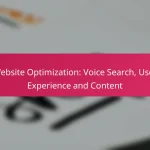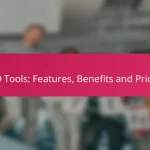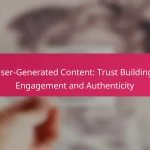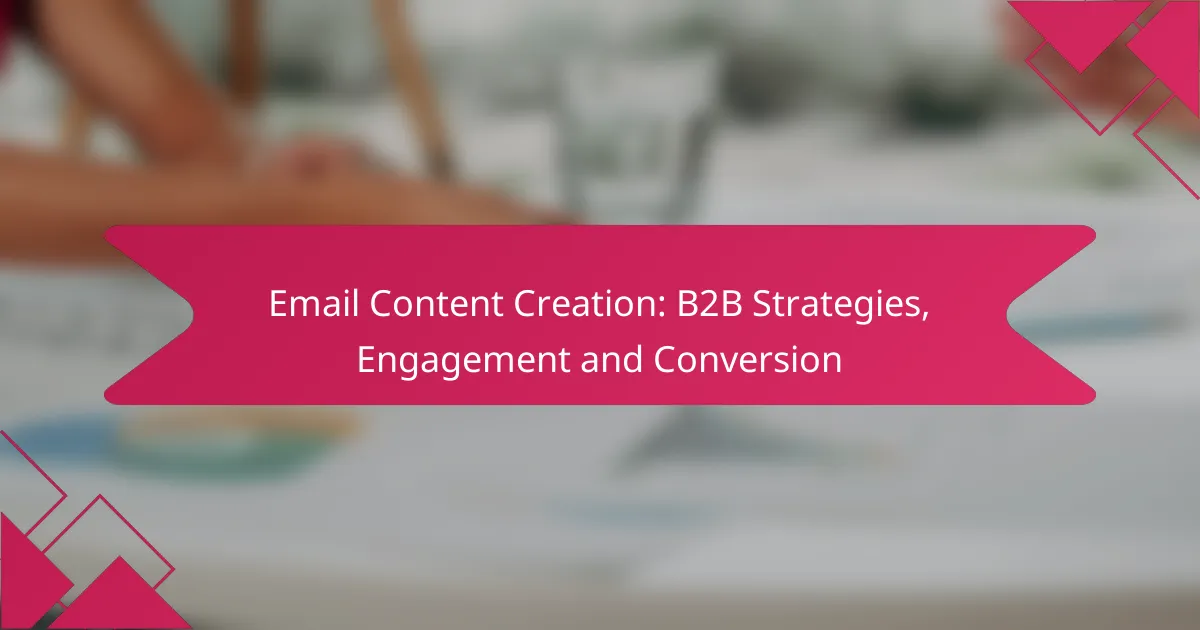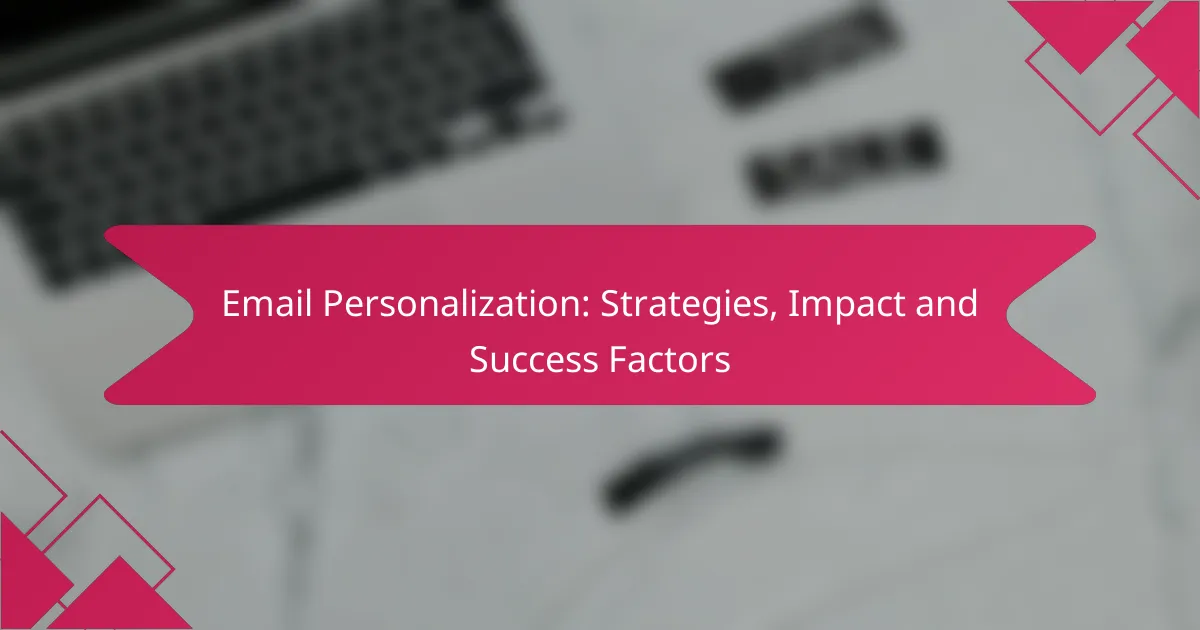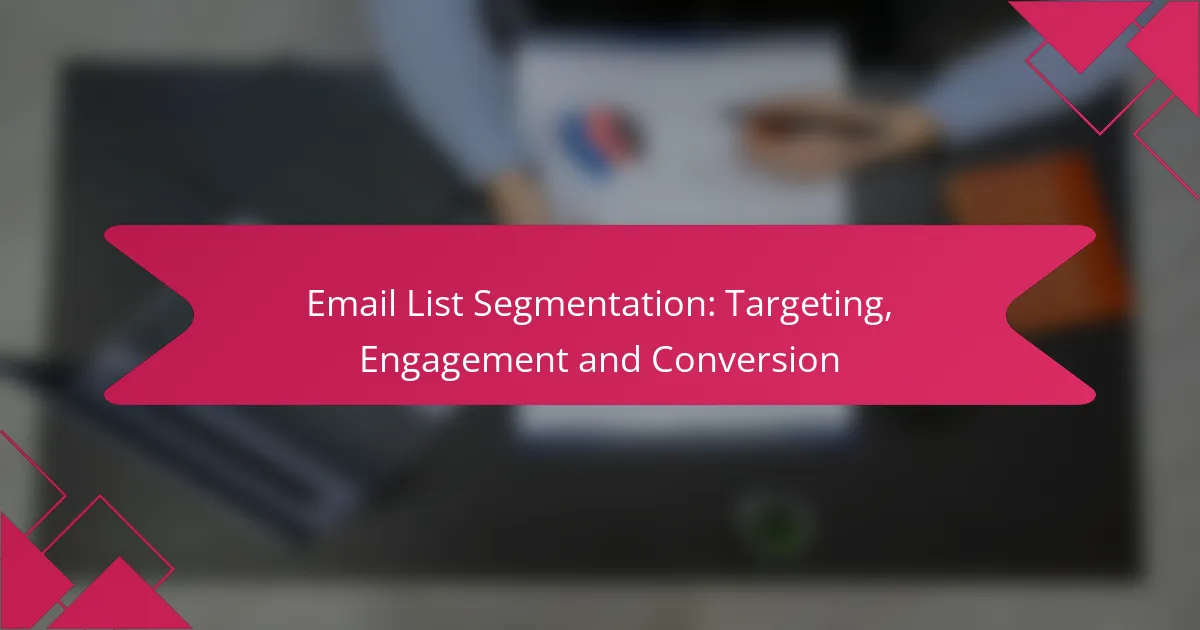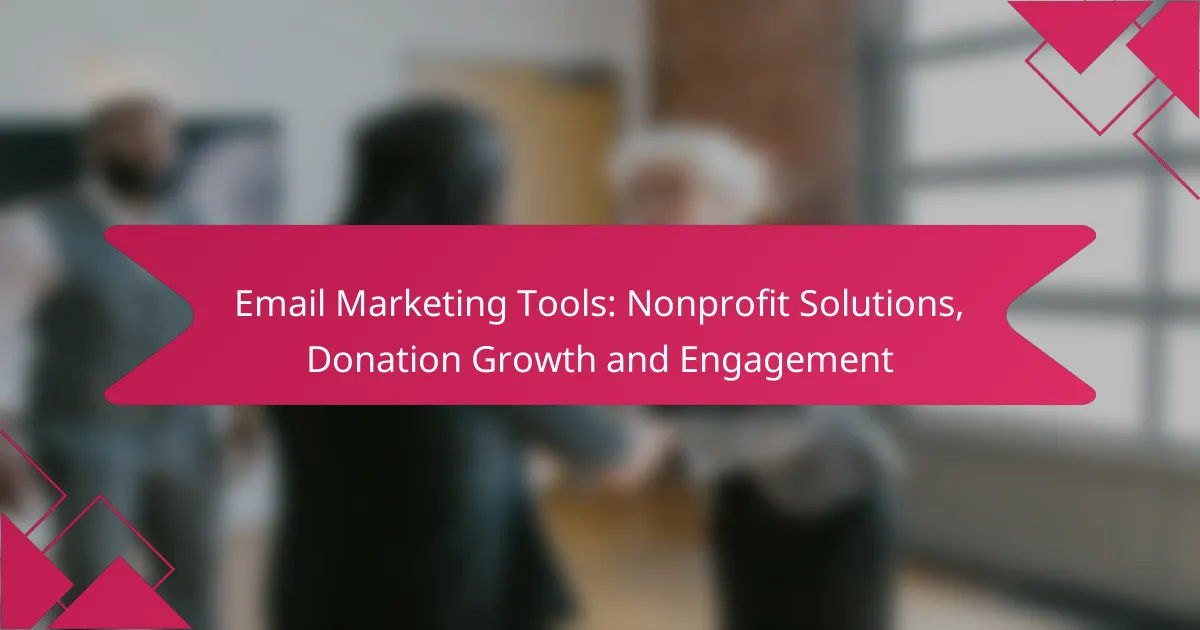Creating effective B2B email content requires a deep understanding of your audience to craft tailored messages that resonate. By focusing on personalization, segmentation, and clear calls to action, businesses can significantly enhance engagement and drive conversions. Implementing best practices and measuring conversion rates are essential for optimizing email marketing strategies and achieving desired outcomes.

How to create effective B2B email content in Canada?
Creating effective B2B email content in Canada involves understanding your audience and delivering tailored messages that resonate. Focus on personalization, segmentation, and clear calls to action to enhance engagement and drive conversions.
Personalization techniques
Personalization in B2B emails can significantly increase engagement rates. Use the recipient’s name, company name, and relevant industry insights to make your emails feel tailored. For example, referencing a recent achievement of their company can create a connection.
Consider dynamic content that changes based on the recipient’s behavior or preferences. This could include product recommendations based on past purchases or content suggestions aligned with their interests.
Segmentation strategies
Segmentation involves dividing your email list into smaller groups based on specific criteria, such as industry, company size, or engagement level. This allows you to send more relevant content to each group, increasing the likelihood of conversion.
For effective segmentation, analyze your audience data to identify patterns. You might segment by demographics, purchase history, or even engagement metrics like email opens and clicks. Tailor your messaging to address the unique needs of each segment.
Compelling subject lines
A compelling subject line is crucial for improving open rates. Aim for clarity and relevance, while also creating a sense of urgency or curiosity. For instance, “Unlock 20% Savings on Your Next Purchase” can entice recipients to open the email.
Keep subject lines concise, ideally under 50 characters, and test different variations to see what resonates best with your audience. Avoid using all caps or excessive punctuation, as these can trigger spam filters.
Clear calls to action
Clear calls to action (CTAs) guide recipients on what to do next. Use strong, action-oriented language like “Download Now” or “Schedule a Demo” to prompt immediate responses. Ensure your CTAs stand out visually within the email.
Position CTAs strategically throughout the email, not just at the end. Consider including multiple CTAs for different segments of your audience, directing them to relevant landing pages or resources that align with their interests.

What are the best practices for B2B email engagement?
Effective B2B email engagement hinges on understanding your audience and delivering relevant content at the right time. Implementing best practices can significantly enhance open rates, click-through rates, and overall conversions.
Optimal send times
Sending emails at the right time can greatly influence engagement. Research suggests that mid-week days, particularly Tuesday to Thursday, often yield higher open rates, as professionals are more likely to check their emails during these days.
Consider your target audience’s time zone and work habits. For instance, sending emails early in the morning or just after lunch can capture attention when recipients are more likely to be checking their inboxes.
Mobile-friendly design
With a significant portion of B2B emails being opened on mobile devices, ensuring your emails are mobile-friendly is crucial. Use responsive design techniques to make your content easily readable on smaller screens.
Keep your layout simple, with clear calls to action (CTAs) that are easy to tap. Avoid large images that may not load well on mobile networks, and ensure text is legible without zooming.
A/B testing methods
A/B testing is a powerful method for optimizing email engagement. By sending two variations of an email to a small segment of your audience, you can determine which version performs better based on metrics like open rates and click-through rates.
Test different subject lines, email layouts, and CTAs to identify what resonates most with your audience. Make sure to analyze the results thoroughly and apply the insights to future campaigns for continuous improvement.

How to measure email conversion rates?
Measuring email conversion rates involves tracking the percentage of recipients who complete a desired action after engaging with your email. This metric is crucial for assessing the effectiveness of your email marketing strategies and optimizing future campaigns.
Key performance indicators
Key performance indicators (KPIs) for email conversion rates typically include open rates, click-through rates (CTR), and actual conversion rates. Open rates indicate how many recipients opened your email, while CTR shows the percentage of those who clicked on a link within the email. The conversion rate is the ultimate measure, reflecting the percentage of recipients who completed the desired action, such as making a purchase or signing up for a webinar.
To effectively measure these KPIs, set clear goals for each campaign. For instance, if your goal is to drive sales, track how many recipients clicked through to your product page and subsequently made a purchase.
Tracking tools
Utilizing tracking tools is essential for accurately measuring email conversion rates. Many email marketing platforms, such as Mailchimp or HubSpot, offer built-in analytics that provide insights into open rates, CTR, and conversions. These tools often allow you to segment your audience, enabling more targeted analysis of different demographics or behaviors.
Additionally, integrating Google Analytics with your email campaigns can provide deeper insights into user behavior post-click. By setting up UTM parameters, you can track how email traffic contributes to conversions on your website.
Benchmarking against industry standards
Benchmarking your email conversion rates against industry standards helps you understand your performance relative to competitors. Average conversion rates can vary significantly by industry, typically ranging from 1% to 5% for B2B emails. Knowing these benchmarks allows you to set realistic goals and identify areas for improvement.
To effectively benchmark, research industry reports or case studies relevant to your sector. This information can guide your strategy and help you adjust your tactics to meet or exceed these standards, ultimately improving your email marketing effectiveness.

What are the common pitfalls in B2B email marketing?
Common pitfalls in B2B email marketing include overly promotional content, neglecting mobile users, and ignoring unsubscribe rates. These issues can significantly hinder engagement and conversion rates, making it essential to address them effectively.
Overly promotional content
Overly promotional content can alienate recipients and reduce engagement. Emails that focus solely on selling products or services often fail to provide value, leading to lower open and click-through rates.
To avoid this pitfall, incorporate educational content, industry insights, or helpful resources alongside promotional messages. Aim for a balanced approach where the recipient feels they are gaining something valuable, not just being sold to.
Neglecting mobile users
Neglecting mobile users is a critical mistake, as a significant portion of B2B emails is opened on mobile devices. If your emails are not optimized for mobile viewing, you risk losing potential leads and conversions.
Ensure that your email design is responsive, with clear calls to action and easily readable text. Test your emails on various devices to confirm that they display correctly and maintain functionality across platforms.
Ignoring unsubscribe rates
Ignoring unsubscribe rates can lead to a dwindling email list and reduced engagement over time. High unsubscribe rates often indicate that your content is not resonating with your audience or that you are over-communicating.
Regularly monitor unsubscribe metrics and seek feedback from recipients. Consider segmenting your audience to tailor content more effectively, ensuring that your emails remain relevant and engaging to your target market.

What frameworks can enhance B2B email strategies?
Effective B2B email strategies can be significantly improved by utilizing frameworks such as customer journey mapping and content calendar development. These frameworks help businesses understand their audience better and plan their email content strategically to drive engagement and conversions.
Customer journey mapping
Customer journey mapping involves outlining the stages a potential client goes through from awareness to decision-making. This framework helps identify key touchpoints where email communication can be most effective, ensuring that messages are relevant and timely.
To create a customer journey map, start by defining the stages: awareness, consideration, and decision. For each stage, identify the specific needs and pain points of your audience, and tailor your email content accordingly. For instance, introductory emails may focus on brand awareness, while later emails can offer case studies or product demonstrations.
Content calendar development
A content calendar is a strategic tool that outlines when and what to send in your email campaigns. This framework helps maintain consistency and ensures that your messaging aligns with marketing goals and key dates, such as product launches or industry events.
When developing a content calendar, consider including various types of content, such as newsletters, promotional offers, and educational resources. Aim for a balanced mix that caters to different segments of your audience. A good practice is to plan content at least one month in advance, allowing for adjustments based on performance metrics and feedback.

How to leverage automation in email campaigns?
Leveraging automation in email campaigns allows businesses to streamline their communication, enhance engagement, and improve conversion rates. By utilizing automation tools, companies can send timely, relevant messages to their audience based on specific triggers or behaviors.
Benefits of email automation
Email automation offers several advantages, including increased efficiency and personalized communication. Automated campaigns can save time by scheduling emails in advance and targeting specific segments of your audience based on their interactions with your brand.
Additionally, automation can lead to higher engagement rates, as emails can be tailored to individual preferences and behaviors. For instance, a welcome series for new subscribers can nurture leads and guide them through the sales funnel effectively.
Key automation tools and platforms
There are numerous tools available for automating email campaigns, each with unique features. Popular platforms like Mailchimp, HubSpot, and ActiveCampaign provide user-friendly interfaces and robust automation capabilities.
When selecting a tool, consider factors such as integration with your existing systems, pricing models, and the ability to segment your audience effectively. Most platforms offer free trials, allowing you to test their features before committing.
Best practices for automation
To maximize the effectiveness of your automated email campaigns, follow best practices such as segmenting your audience based on behavior and preferences. This ensures that your messages are relevant and timely, leading to higher open and click-through rates.
Additionally, regularly monitor and analyze the performance of your automated emails. A/B testing subject lines and content can help identify what resonates best with your audience, allowing for continuous improvement.
Common pitfalls to avoid
One common pitfall in email automation is over-automation, which can lead to impersonal communication. Ensure that your emails maintain a human touch, even when automated.
Another mistake is neglecting to clean your email list regularly. Keeping your list updated helps maintain high deliverability rates and engagement levels. Aim to remove inactive subscribers periodically to improve overall campaign performance.
